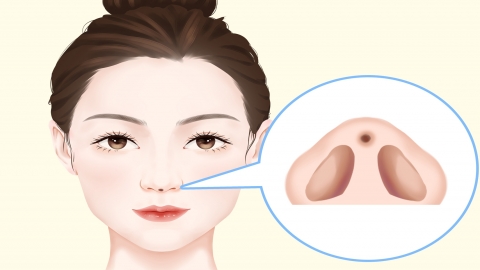What should I do if there is a slight protrusion on one side of the nasal bridge after rhinoplasty?
Generally, rhinoplasty refers to nasal augmentation, primarily achieved by implanting autologous or allogenic tissue or tissue substitutes into the nasal area to elevate the external nose and improve its shape. The general reference price for rhinoplasty ranges from 10,000 to 30,000 yuan per session. Noticeable improvement is usually observed within 7-14 days, although postoperative symptoms such as pain and swelling may occur. Slight protrusion on one side of the nasal bridge after rhinoplasty is typically associated with early postoperative swelling, improper placement of the implant, rejection reactions, postoperative infection, or allergic reactions. Prompt treatment, including general management, surgical intervention, or medication, should be undertaken based on the underlying cause. Detailed analysis is as follows:

1. Early Postoperative Phase
Rhinoplasty is an invasive procedure, and tissue damage during surgery may lead to postoperative edema, causing slight protrusion on one side of the nasal bridge. This is a normal phenomenon and can be observed temporarily without specific intervention.
2. Improper Implant Placement
If the implant is misplaced or shifted during rhinoplasty, it may cause a protrusion on one side of the nasal bridge. In such cases, the implant can be repositioned under a physician's guidance by reopening the incision and placing the implant correctly.
3. Rejection Reaction
If the body's tissues are incompatible with the implant, a rejection reaction may occur, leading to similar discomfort, often accompanied by localized itching and pain. It is recommended to promptly consult a physician for surgical incision and removal of the implant as instructed.
4. Postoperative Infection
Incomplete disinfection after rhinoplasty or poor local hygiene may lead to inflammation and subsequent inflammatory edema, causing a unilateral protrusion, often accompanied by redness and pain. Prompt medical treatment with prescribed medications such as amoxicillin capsules, cefradine capsules, or roxithromycin capsules is recommended.
5. Allergic Reaction
Allergic reactions are typically related to exposure to allergens. If an allergy to the implant material occurs, it may lead to similar discomfort, accompanied by localized itching and redness. Timely medical treatment with prescribed antihistamines such as loratadine tablets, cetirizine hydrochloride tablets, or chlorpheniramine maleate tablets is recommended.
A slight protrusion on one side of the nasal bridge after rhinoplasty is not necessarily caused by pathological factors. However, if the symptom persists for a prolonged period, it should be taken seriously. Additionally, adequate rest is necessary, and strenuous physical activity should be avoided until full recovery.





